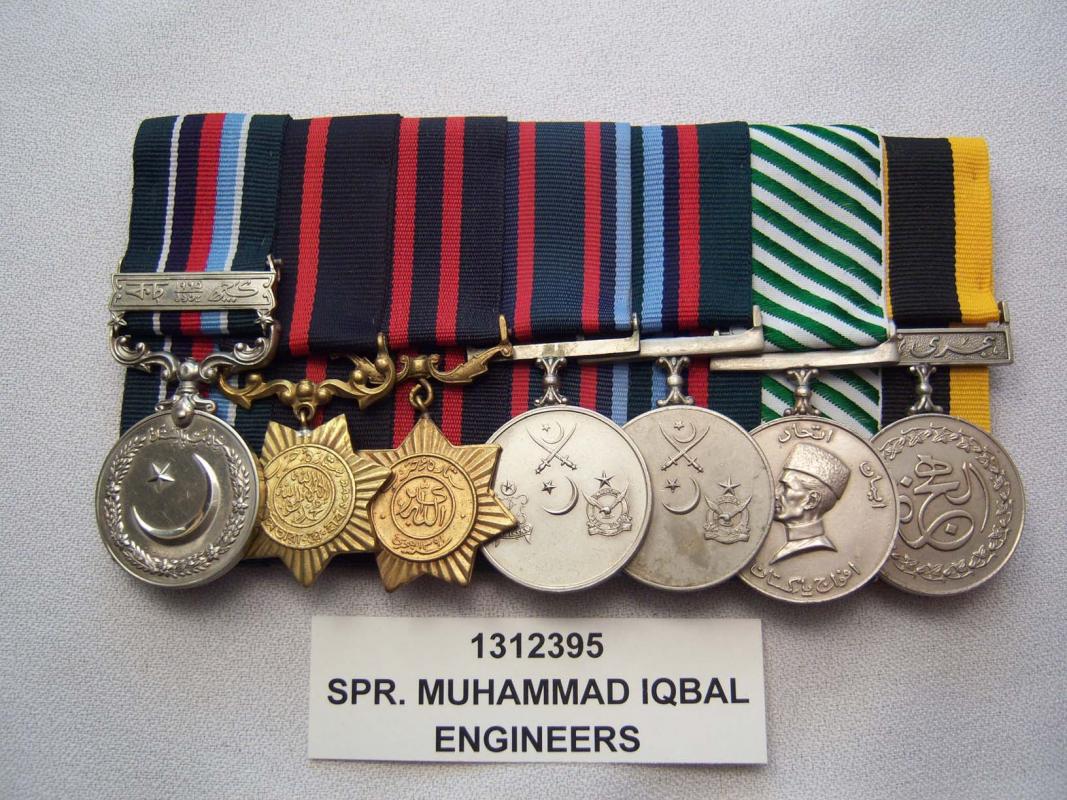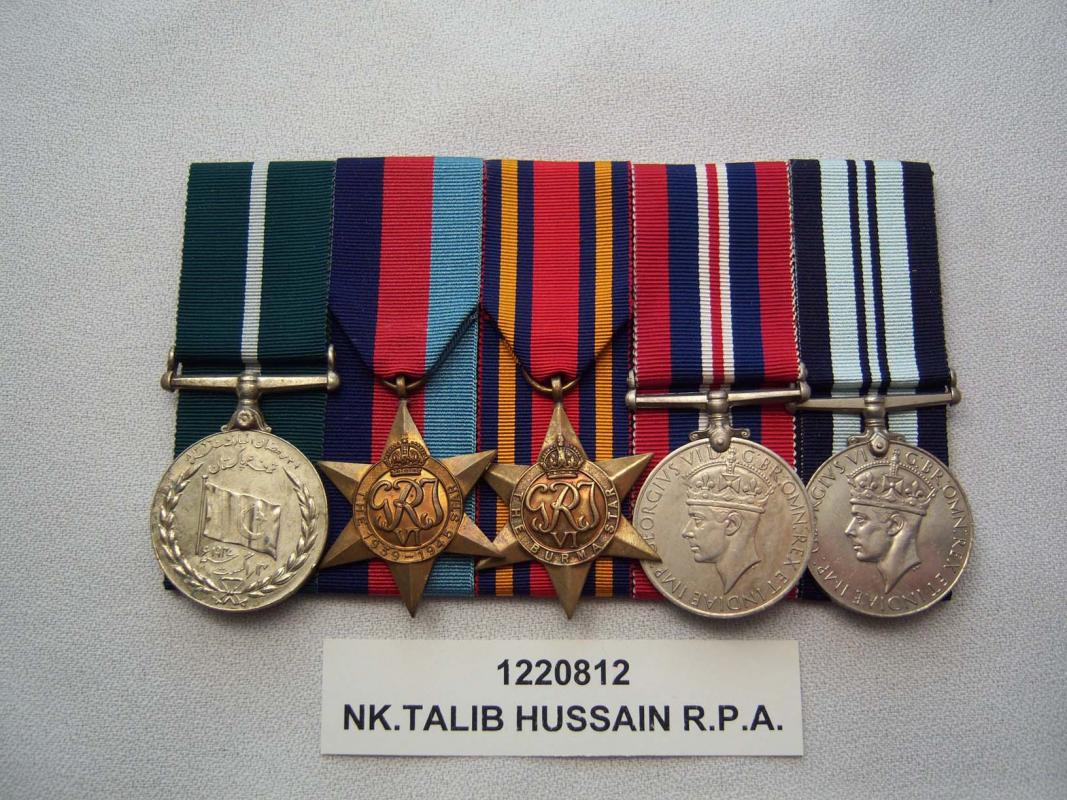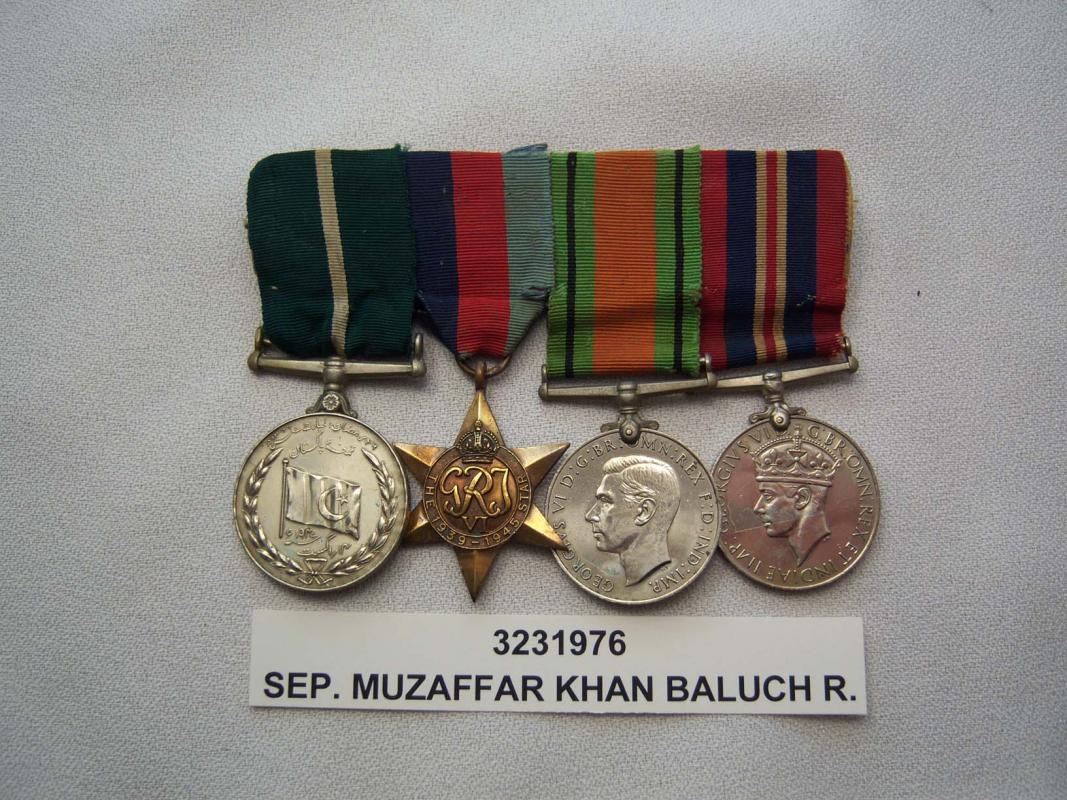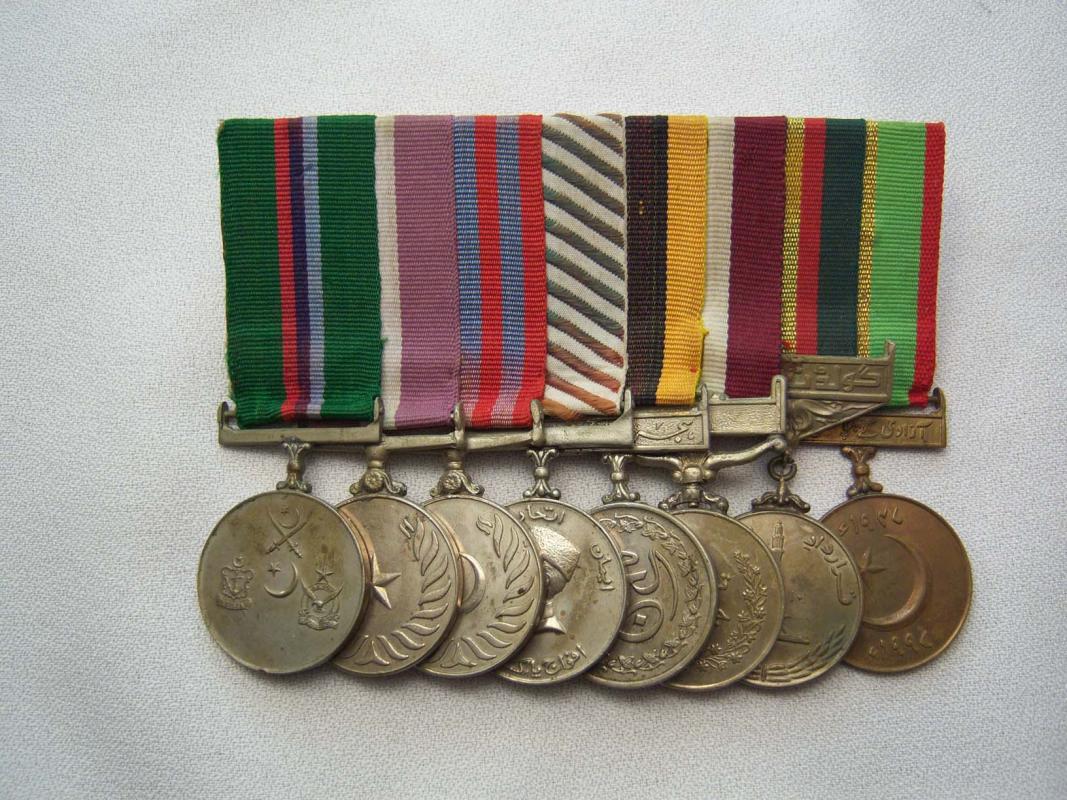-
Posts
6,486 -
Joined
-
Last visited
-
Days Won
10
Content Type
Profiles
Forums
Blogs
Gallery
Events
Store
Posts posted by Brian Wolfe
-
-
You are a braver man than me.
I'm glad the bend test didn't cause any problems.
I've had some very thin bladed swords in my collecting life and as I mentioned before I would never attempt it.
In a coversation with my dealer friend last evening he told me that he won't purchase any of these that come to his shop because of the good quality reprodictions.
There is, in my opinion, a place for good quality reproducions for use on restaurant walls, dens (now called "man caves") and, of course, for reenactors. I shudder at the thoughs of an authentic weapon of any kind being bolted to the was of a bar or restaurant.
Regards
Brian
0 -
Make sure you tell them it looks like a juvinile Equus eisenmannae. That should keep them scratching their collective heads for a while.
Regards
Brian
0 -
A little more research, see below.
A good friend of mine who ownes a militaria store said that the best way to prove such a sword is authentic is to give it the bend test. Place the tip on the floor and apply a bit of pressureto the side of the blade. The real one will "bounce" back the repro will snap. To be honest I would not try this as a complete repro is still better then a broken one.
Ames Mfg. Co, is still making the reproductions, you can run the name in Google and check this out.
Regards
Brian
0 -
Hi Rogi,
The sword being authentic is really good news and I couldn't be happier. I suspose after a whiile one tends to get a little too cautious. As j-sk has pointed out the buckle may have a reason for the stains. I like the positive direction this is going.
Regards
Brian
0 -
I'm still not convinced this is original.
Look at the pair as a whole. The sword is in such good condition that the leather seal/washer above the hand guard is pristine, not a sign of any use. Ok, so perhaps the sword was put away when new and never used or worn and therefore is a museum quality piece. However to then find the CSA (the other side of the conflict) belt also in muuseum quality condition I find hard to accept. I also find the buckle a bit to "new" as far as showing any true age.
While I would like to say this is genuine I have my serious doubts.
Let's keep this post active so more members can weigh in on this.
Regards
Brian
0 -
Yes, by all means.
I hope for the best, of course.
Regards
Brian
0 -
An interesting artifact, thanks for sharing it with the membership.
Regards
Brian
0 -
Hello Jean-Sam,
This is not my area of collecting, mine being confined to British, however while you didn't say it was an authentic specimen or not I have this feeling that it is almost too nice to be original.
I am looking at the belt leather and it looks to be too fresh to have the 150+ years of age. The hand grips also look mint...too mint?
It is a nice sword and I'll reserve final judgement, though I've already probably said too much, until other collectors and especially those of that era weigh in.
Thanks for posting it.
Regards
Brian
0 -
That's only in Aliston Peter.
Regards
Brian
0 -
An absolutely beautiful example.
Thanks for posting it Mervyn.
Regards
Brian
0 -
Mike, I could not have imagined such a collection existed outside of a museum.
Well done.
Regards
Brian
0 -
I just picked up a pair also to a Lieut. and like yours and others they have no number or regimental notation.
Not to worry, if indeed you are, as this is correct.
Looking forward to seeing them.
Regards
Brian
0 -
By the way Rick, you have 4 traffic stop lights!!!! Wow!
I knew you were a big town boy, here in New Hamburg we have no stop lights.
On Saturday and Sunday there is almost no traffic or cars parked in the town town core, we even shut down the main drag for a couple of days for the annual Mo Par Fest car show.
Now that's a small town.

Regards
Brian
0 -
Rick, Rick Rick, where is my mind today?

It would be the Sindh Regiment which was formed mainly of the Sindu Population of the Punjab region (Nort West India).
Sorry it took so long for this old guy to kick-start his brain.
Regards
Brian
0 -
I would think if he were a Sikh then there would have been the title of SIngh, for example the naming would be "YOUNIS SINGH". That is not to say that there is no chance of him being a Sikh as there are a few Sikhs in the Pakistan Army. However the Nation of Pakistan is an Islamic state and therefore it would not be as attractive for a Sikh to join; Sikhism being a religon. As to the chances of the medal referencing the "Sikh Regiment" I'd have to say, "Not a chance" as the Star was for the 1971 War with India and there were no Sikh Regiments in the Pakistan Army at that time. I believe there was talk of proposing a separate Sikh Regiment to the Pakistani Parliment in or around 2005 but I don't believe this was ever done and if it was I don't recall anything about it in happening the news.
It would be my guess he is Islamic even though I would expect the naming to have been "YOUNIS KHAN", be that as it may, Younis is a common enough Islamic name so that is where I would place this.
Regards
Brian
0 -
These two wars were the only "real" wars between India and Pakistan, the later armed conflicts that occurred were minor skirishes. There was a huge build up along the boarder some years ago with no shots fired. According to what I read the Indain Army lost more soldiers due to accidents while moving such a large army to the boarder than they did during the "real" wars. One would have to assume the same was true of the Pakistani Army as well, though there are no official statements along those lines. They tend to be very security minded about any military information being given out to anyone.
There are more loose medals on the market today than groups and I am assuming that they were either awarded and never court mounted or the dealers in Pakistan (and India) broke up the groups thinking that they would get more for the singles than for a group. A case of not knowing your target market. It could be someone bringing these single medals into the States thinking they will cash in on the medals market, rather than family medals being sold off, another case of misreading the market. I wish someone would start to bring in Orders and Decorations and not just military service medals. Perhaps the GMIC should sponsor an expedition into Pakistan to locate and bring some of these seldom seen O & Ds out. You supply the pith helmets and I'll supply the Canadian Flags for our jackets. I wonder just how well we'd do?

After Pakistan Independence the armed forces created, for whatever reason, many new regiments. You'll find them to a lot of different "occupations" like education corps etc. If we find out what "S.R" stands for I am sure we'll both be saying, "Of course why didn't I think of that?"

I'll ask my contact in Amritsar (Punjab) and see if he has any idea.
Regards
Brian
0 -
Hi Rick,
Here are some examples to show what I was talking about in the above emails.
The first shows a great group where the recipient was in both wars and the two Stars are worn just before the two War Medals.
The best feature of a group with the 1965 War Star is that it is named and therefore the group itself can be attributed to a particular person and regiment.
The Pakistan Independence medals (shown later in this post) are also name so if a group is lacking the 1965 War Star but has the Independence Medal you also know the name of the recipient etc.

In the case of British Medal worn with Pakistani medals the Pakistani medals come first. In this example the group has the India Independence Medal in the last place as it would be in any British India group but with the Pakistan Independence Medal first. The recipient served in the Burma Campaign as can be seen, I only mention this as it is of particular interest to me.

Another example is this swing mounted group of four which shows the recipient was awarded the British Defence Medal, which may indicate he served only in England, as the lack of a campaign medal would suggest he saw no "action".

Finaly I have included this next group to show an unnamed group that has the 1971 War Medal which indicates the recipient served during the War but not in a zone of conflict, or "action". The real reason is that I just like this group and while going through the Pakistan section of the collection it caught me eye. Before you ask, yes, my eye is much better now (though not my sense of humour).


Regards
Brian
1 -
The Star indicates service in an area under fire while the Medal is for service during the war but not necessarily under fire.
The Star would proceed the medal when worn.
If the soldier served in the British Military before Indian Independence and therefore the Partician (resulting in Pakistan's independence) you will find the Indian or Pakistani Medals worn with the British medals the soldier previously was awarded.
I'll see if I can find some examples to post tomorrow.
Regards
Brian
0 -
The one thing I miss about leaving the farm for the urban life is the ability to blast away until my heart's content and at the time I owned a functional Lewis Gun!

Regards
Brian
0 -
Hello Rick,
Correct, what you have is the Istar-i-Herb 1385/1965 War Star for combat service in the 1965 Indo-Pakistani War. The 1971 War Stars are seldom named, I guess they just gave up on that exercise, too bad.
I can't help at this time with the regimental iitials but I'll keep looking through my notes. I really must get my notes organized and stored in my computer.
Regards
Brian
0 -
Hello,
A great rifle, or shotgun in this case. I've done my share of hunting and can attest to the .410 as being a servicable squirrel, rabbit and upland bird gun. I owned two, a double side by side coach gun and a pump action.
As to these conversions I will go out on a limb here (i.e. I stand to be corrected) and say that these were used for crowd control; for example in the case of a riot. WHile they can be deadly at closer ranges their killing power greatly deminished quickly after perhaps 50 yards.
The Martini Henry rifle was also bored out for use as a .410 and I understand that crowd was the purpose of these. What maker is it? Would it have been made in the UK or India (I.R.F), Isapor?
Nice weapon and thanks for posting it.
Regards
Brian
0 -
Good one!

I too was thinking, "What the ...?"
Thanks for posting this unique and interesting artifact.
Regards
Brian
0 -
Hello Jim,
Welcome to the forum.
As you can see we have a small number of people interested in firearms here so that the addition of another of the same interest is really good news to me.
I agree with you in the sense that reproductions of the level we see today are often passed off as authentic which is a true moral "crime". At the prices of authentic pieces today one can ill afford to learn only through one's own mistakes.
The one saving grace for these types of black powder revolvers (note I didn't use the term "handguns", being Canadian
 ) is that they can be fired without risking damage to an authertic specimen. While almost all, if not all, of my collection is in working condition I would never fire one for fear of such damage.
) is that they can be fired without risking damage to an authertic specimen. While almost all, if not all, of my collection is in working condition I would never fire one for fear of such damage. In the case of the weapon presented here, Mervyn, being the gentleman he is, has made it clear that this is a reproduction and not an authentic piece. That's all any seller can really do as what the next owner will do is beyond the control of the initial seller. We must educate ourselves, as indeed you have, in order not to make expensive mistakes. When it comes to any collectable, like investing capital, never risk more than you can afford to lose. In the case of firearm collecting the lessons can be expensive so unless you can afford to play one should stick to books on the subject.
I look forward to your future submissions on the subject and perhaps some images of your collection.
Regards
Brian
0 -
What a great collection!
I have moved this topic to this section so that more of the members interested in tipstaffs might get the chance to view it.
Regards
Brian
0




Civil War - US sword - CSA belt
in United States of America
Posted
Hello Jean-Sam,
I am happy to hear that all ended well. One of the strong points of the GMIC is the collective knowledge of its members and the readyness of the members to help out fellow collectors.
As far as reproductions are concerned I think we have all purchased them unintentionaly at one time or another. I have a couple that sit on my desk just to remind me that we all make mistakes.
Regards
Brian